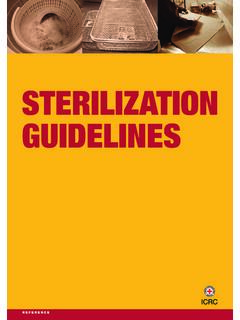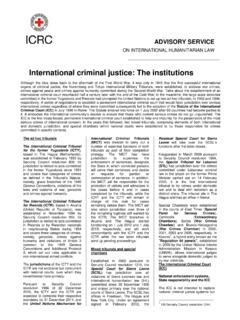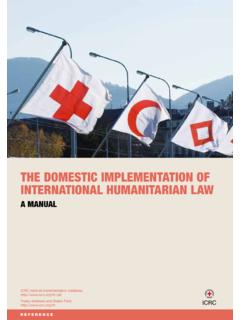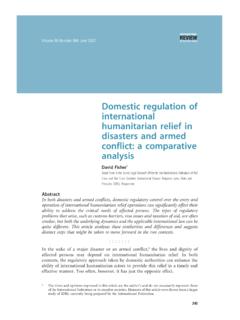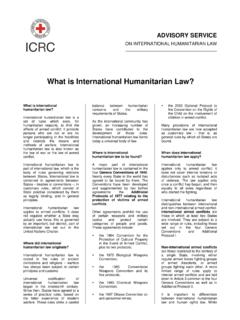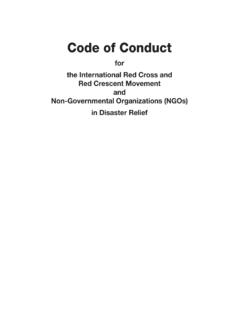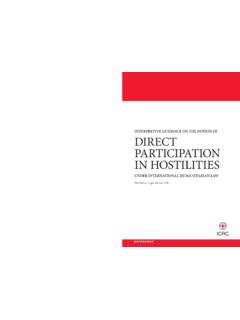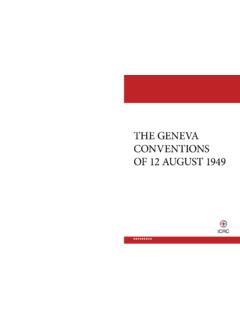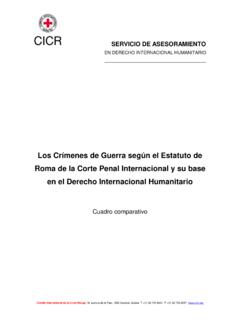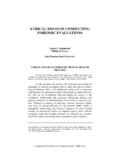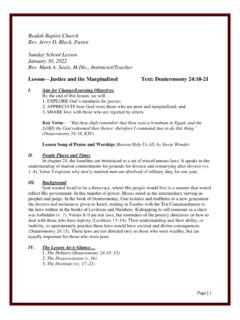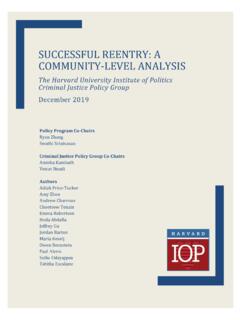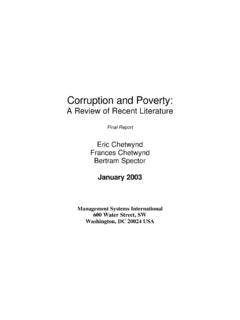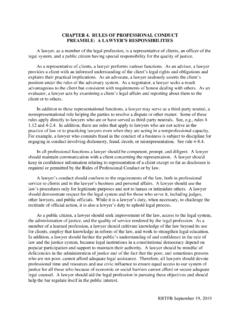Transcription of Decision-Making Process in Combat Operations
1 4120/002 2000 Decision-Making PROCESSIN MILITARY Combat OPERATIONSI nternational Committee of the Red Cross19, avenue de la Paix1202 Geneva, SwitzerlandT +41 22 734 60 01 F +41 22 733 20 57E-mail: ICRC, October 2013 Decision-Making PROCESSIN MILITARY Combat OPERATIONSPREFACEE very state has an obligation to ensure respect for the law of armed conflict. The ICRC is mandated to support states in these efforts and does so through a range of activities, including promoting the integration of appropriate com-pliance measures into military doctrine, education, training and sanctions, with a view to ensuring that behaviours of those engaged in armed conflict comply with the present note is designed to support the integration of the Law of Armed Conflict into military Decision-Making processes, primarily at the operational level. It is not based on any specific national doctrine.
2 It is designed to support those responsible for developing national doctrine and operational planning procedures in their efforts to integrate the Law of Armed Conflict into military practice. The desired outcome is staff procedures which ensure the development of military plans and orders that accurately and effectively integrate compliance with the Law of Armed Conflict into operational practice, thereby reducing the effects of armed conflict on those who do not, or no longer, participate in the techniques of warfare change rapidly, particularly at times when Combat Operations are commonplace. The humanitarian impact of conflict is timeless. The Law of Armed Conflict is designed to limit the humanitarian consequences of war. The effective integration of the law into military planning is the epitome of effective, professional command and staff processes. It is the aim of this publication to encourage the further development of such 7 understanding THE OPERATING ENVIRONMENT FRAMING THE PROBLEM 9 Initial preparation 9 Legal framework 9 understanding THE PROBLEM MISSION ANALYSIS 11 Legality 11 Specified and implied tasks 12 Commander s direction and review 13 understanding THE PROBLEM EVALUATION OF FACTORS 15 Intelligence preparation of the battlespace 15 Environment 19 Civilians 20 Enemy forces 21 Own (or friendly)
3 Forces 22 Time 24 Rules of engagement 25 DEVELOPMENT AND EVALUATION OF COURSES OF ACTION 27 Synchronization 27 Allocation of Combat power 28 Deployment 29 Fires 30 Rules of engagement 31 Wargaming 32 THE COMMANDER S decision 33By the end of planning 33 Scheme of manoeuvre 34 During execution 36 LOAC IN MILITARY Operations ORDERS 37 Situation 37 Mission 41 Execution 41 Logistics 48 Command and signal 51 INTRODUCTION1.
4 Command responsibility or hierarchical accountability is a tenet of the Law of Armed Conflict (LOAC). Accordingly, commanders will be held criminally responsible if they knew, or should have known, that subordinates were going to break the law ( commit a war crime) but did nothing to prevent it; or if they fail to take any action against (punish or report) subordinates who have already committed a war crime. Other superiors, such as staff officers, though they do not have operational command responsibility, are still criminally liable if they become aware of current or pending war crimes committed by their subordinates and do not prevent them, or fail to report them to their The present notice is intended for commanders, staff officers and above all doctrine writers. With the ob-jective of assisting them in their legal responsibility, it provides an illustration of where and how the application of LOAC should be integrated into the operational and tactical Decision-Making Process and operational orders in time of armed conflict to create the necessary conditions for the law to be respected in the conduct of Operations .
5 The structure of this guide therefore reflects the classical military estimate or appreciation Process as taught, trained and applied in the majority of armed forces around the To comply with the language of its users and as a matter of simplification, the text refers to: y Law of Armed Conflict , or LOAC, instead of International Humanitarian Law , as the commonly preferred term within the military;8 Decision-Making Process IN MILITARY Combat Operations y Decision-Making procedure or manual , leaving it up to the reader on the basis of his or her own national doctrinal framework to consider the relevant set of documents; y Legally protected persons, objects, installations and areas to generically cover all these categories; y collateral damage , instead of incidental loss of civilian life, injury to civilians, damage to civilian objects, or a combination thereof , as the commonly preferred term within the military; y Attack to indifferently cover both offensive and de-fensive Operations ; y Relevant staff appointment , leaving it up to the reader to designate the relevant appointment(s) as staff organ-ization varies from one country to another; while y Measure covers the tasks allocated, means refers to the necessary tools, and y Mechanism relates to a coordination between different staff appointments to ensure respect for the such as the commander , he or his are not meant to exclude female commanders or staff officers in any way.
6 Whenever the masculine gender is used, both men and women are It is a basic rule of international law that states cannot use domestic law to justify non-implementation of their international obligations. The present document is, therefore, based on the assumption that those authorities with the legal power to change the domestic statutes, de-crees, rules or regulations have ensured that domestic law is in conformity with international The present document is based upon ICRC field ex-perience and LOAC. As an illustration of the necessary translation of legal rules into concrete measures, means and mechanisms to ensure respect for the law, it does not re-place the law. It remains the subject of improvement and any suggestion in this regard will be THE OPERATING ENVIRONMENT FRAMING THE PROBLEMI nitial preparation6. The commander will frequently start his analysis with his orders and a map or chart, before his staff develop the intel-ligence preparation of the battlefield (IPB) tools needed to give him detailed information.
7 At this early stage, accurate information on general locations of legally protected persons, objects, installations and areas will help to shape his initial thoughts. The Decision-Making procedure should ensure that accurate information is available at appropriate levels of notice, to inform this early Decision-Making framework7. During conflict, an important shaping factor, setting the scene for the commander s planning Process and later the development of courses of military action, is the specific legal framework within which the hostilities are to be conducted. The commander must be apprised of his legal framework as part of the initial framing of the problem. He must clearly understand the implications of the legal status of his Operations . The legal framework will shape all military activity, from the strategic to the tactical level. The level at which this issue is dealt with may vary according to the organization of the respective armed forces and their exact relation or subordination to political authorities.
8 Therefore it is sensible to ask whether the Decision-Making procedure or manual provides the commander and his staff, at the 10 Decision-Making Process IN MILITARY Combat Operations relevant level(s) of the organization, with the necessary measures, means and mechanisms to deal with: yThe analysis of the mission directive to establish the legal status of the conflict ( international armed conflict, non-international armed conflict) and the applicability of various elements of LOAC, including applicable treaties ( Additional Protocols, Ottawa Treaty on the pro-hibition of anti-personnel landmines); yThe guiding principles of LOAC ( precaution, necessity, distinction, proportionality and limitation) and their mandatory application in the planning, ordering and conduct of Operations ; yThe difference, in Operations on the enemy s territory, between an initial invasion phase and a subsequent situation of occupation (particularly concerning the occupying forces responsibility towards the population).
9 understanding THE PROBLEM MISSION ANALYSIS8. While analysing a superior s orders, extracting and deducing the immediate superior commander s intent, the tasks (specified and implied) necessary to fulfil the mission, the applicable constraints and the potential changes in the situation, the tasked commander needs to assess whether he may lawfully execute the given mission within the applicable legal framework. He should therefore be conscious of his obligations under LOAC and of the potential humanitarian impact of his actions. His Commander s Planning Guidance to his staff should include the necessary direction to ensure that the staff incorporate legal and humanitarian factors into their Discipline and due obedience rest upon the general assumption that superiors, as a rule, issue legally valid orders. Nevertheless, obeying a superior s order is no excuse in the case of violation.
10 If any doubt exists as to the legality of a received order or the possibility to execute it in ac-cordance with the law, the capacity must exist for its legality to be questioned by subordinates and either be clarified or confirmed by their superiors. Furthermore, in any case, only legal means and methods of warfare may be used to achieve the legal objectives. The Decision-Making pro-cedure should therefore include processes for: ySetting the mission in the broader picture, so as to es-tablish the military necessity of each element of the 12 Decision-Making Process IN MILITARY Combat Operations superior s plan. This will inform the assessment of pro-portionality for each subsequent action ( the balance between military advantage gained from a successful attack and the potential risk to protected persons or objects); yProviding the opportunity for a tasked subordinate to seek clarification as to the legality of a received order which is not evidently legal in his analysis; yReminding commanders and subordinates of the legal obligation to refuse to execute a manifestly illegal order ( no quarter or no prisoners, deliberate killing of civilians); yGiving guidance on any specific means and methods of warfare which would be illegal in the mission context, or where extra guidance would be required (for example the prohibition on the use of incendiary weapons in an urban environment).
